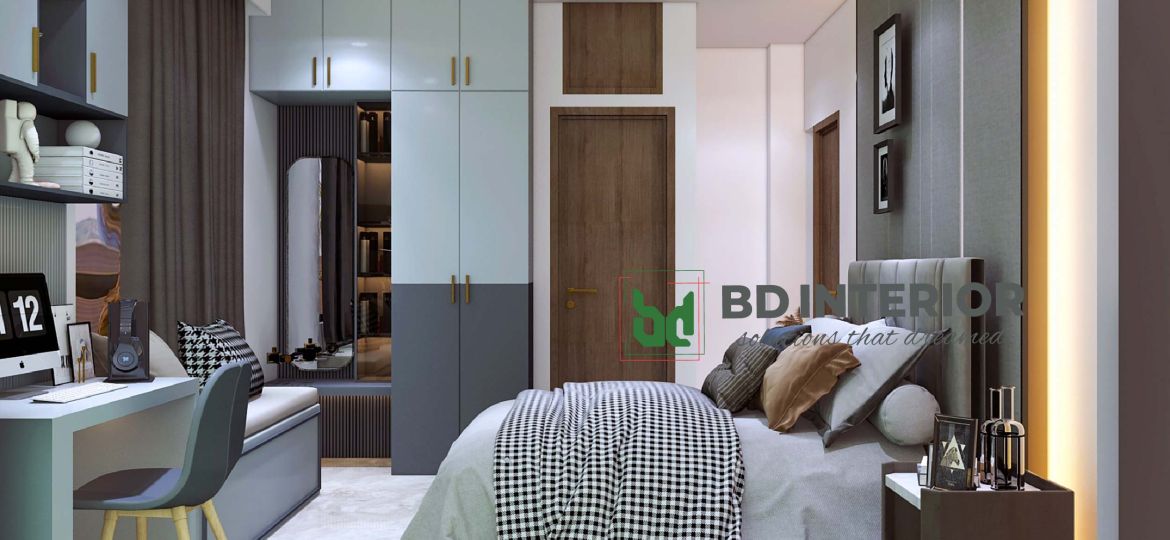
Creating Calm: How Interior Design Can Improve Your Mental Health
In our fast-paced world, our homes have become more than just places to live. They are sanctuaries where we seek comfort, relaxation, and mental rejuvenation. As we become more aware of the impact our surroundings have on our well-being, interior design plays a crucial role in shaping environments that support our mental health. In this blog post, we will explore how thoughtful design choices can create a calming atmosphere, enhance mood, and promote overall mental wellness.
The Power of Space
The layout and organization of our living spaces significantly influence our mental state. Cluttered, chaotic environments can contribute to feelings of stress and anxiety, while well-organized, harmonious spaces can have the opposite effect. Here are some design principles to consider:
Declutter and Simplify:
Adopt a minimalist approach by removing unnecessary items and keeping only what you need and love. This helps reduce visual noise and creates a sense of order.
Use smart storage solutions to keep items out of sight and maintain a clean, tidy space.
Functional Layouts:
- Arrange furniture to create open, unobstructed pathways. This promotes a sense of flow and ease of movement.
- Designate specific areas for different activities (e.g., a reading nook, a workspace) to create purposeful and functional spaces.
Color Psychology
Colors have a profound effect on our emotions and can influence our mood and behavior. When choosing colors for your home, consider the psychological impact of different hues:
- Calming Colors:Soft blues and greens are known for their calming effects, making them ideal for bedrooms and relaxation areas. Neutral tones like beige, ivory, and soft gray can create a serene and balanced environment.
- Energizing Colors: Warm colors like yellow and orange can boost energy and creativity, making them great choices for home offices and creative spaces.
Use these colors sparingly to avoid overstimulation.
Natural Light
Natural light is a powerful mood enhancer. Exposure to sunlight helps regulate our circadian rhythms, which can improve sleep and overall well-being. Here’s how to maximize natural light in your home:
Maximize Windows:
- Keep windows unobstructed by heavy drapes or furniture. Use sheer curtains to allow light to filter through while maintaining privacy.
- Consider installing larger windows or skylights to bring in more natural light.
Mirrors and Reflective Surfaces: - Strategically place mirrors to reflect natural light and make spaces feel brighter and more open.
- Use glossy finishes on walls and furniture to enhance light reflection.

Nature Indoors: Biophilic Design
Biophilic design focuses on incorporating natural elements into interior spaces, promoting a connection to nature that can significantly improve mental health. Here are some ways to bring nature indoors:
Indoor Plants:
- Introduce a variety of indoor plants to your home. They purify the air, reduce stress, and create a calming atmosphere.
- Choose low-maintenance plants if you’re new to gardening.
Natural Materials:
- Use materials like wood, stone, and bamboo in your decor to create a warm, organic feel.
- Opt for furniture and accessories made from sustainable, eco-friendly materials.

Designing for Relaxation
Creating a cozy, relaxing environment is essential for mental well-being. Here are some tips to transform your home into a tranquil retreat:
Comfortable Furniture:
- Invest in comfortable, supportive furniture that encourages relaxation. Think plush sofas, ergonomic chairs, and soft bedding.
Arrange seating to promote conversation and connection.
Soothing Scents and Sounds: - Use essential oils or scented candles with calming fragrances like lavender, chamomile, and eucalyptus.
- Incorporate soothing sounds, such as a water feature or soft background music, to enhance relaxation.

Room-by-Room Tips
Each room in your home serves a different purpose, and its design should reflect that. Here are some specific tips for designing spaces that support mental wellness:
- Create a restful environment with calming colors, soft lighting, and minimal distractions.
- Invest in high-quality bedding and blackout curtains to improve sleep quality.

- Design a welcoming space with comfortable seating, warm lighting, and personal touches like family photos and artwork.
- Incorporate soft textures with throw blankets, cushions, and rugs to create a cozy atmosphere.

- Transform your bathroom into a spa-like retreat with soothing colors, soft lighting, and luxurious towels.
- Add plants, candles, and calming scents to enhance the relaxation experience.
 Conclusion
Conclusion
Thoughtful interior design can significantly impact our mental health and well-being. By creating organized, calming, and nature-inspired spaces, we can transform our homes into sanctuaries that support our mental and emotional health. Whether it’s through decluttering, choosing the right colors, maximizing natural light, or incorporating biophilic elements, small design changes can make a big difference in how we feel in our living environments. Start implementing these tips today and experience the positive effects on your mental wellness.